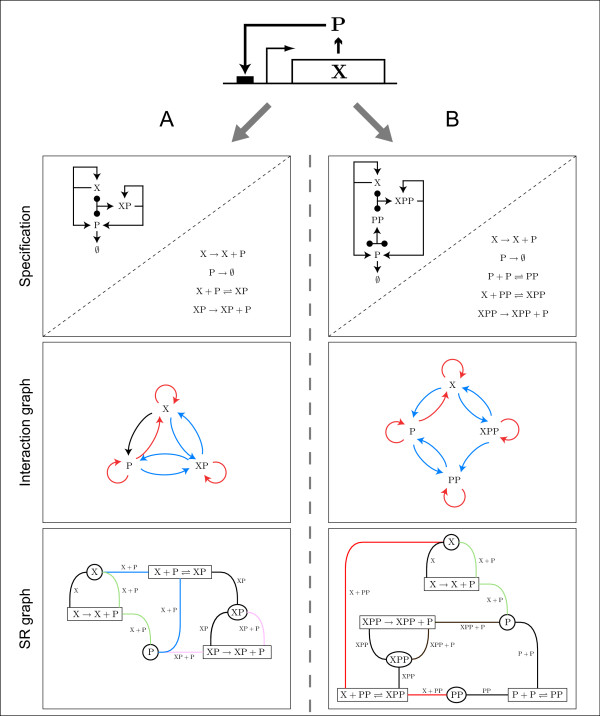Figure 3.
Two specifications of a simple positive autoregulatory subnetwork. A positive autoregulatory motif consists of a gene X that is transcribed and translated into transcription factor P, which in turn positively regulates the transcription of X by binding to a single cis-regulatory element in its promoter as either (A) a monomer or (B) a dimer. For (A), the motif can be specified as a CRN that includes basal production of P from X (X → X + P), degradation of P (P → ∅), binding and dissociation of P from the promoter of X (X + P ⇌ XP), and production of P by the transcription factor-gene complex XP (XP → XP + P). For (B), there is also basal production of P from X and degradation of P, however two transcription factors now associate to form a homodimer (P + P ⇌ PP), and it is this PP dimer that binds to the promoter of X (X + PP ⇌ XPP) and produces P via the dimer-gene complex XPP (XPP → XPP + P). In both cases the motif can also be visualized as wiring diagrams. The corresponding interaction graphs contain positive interactions (blue), negative interactions (red), and a variable interaction that can be either positive or negative, depending on the concentration of the transcription factor P (black). In the SR graphs for these CRNs, species are indicated by circles and reactions by rectangles, with the participation of a species in a reaction denoted by undirected edges labelled with the participating complex. Colored edges indicate a c-pair.

